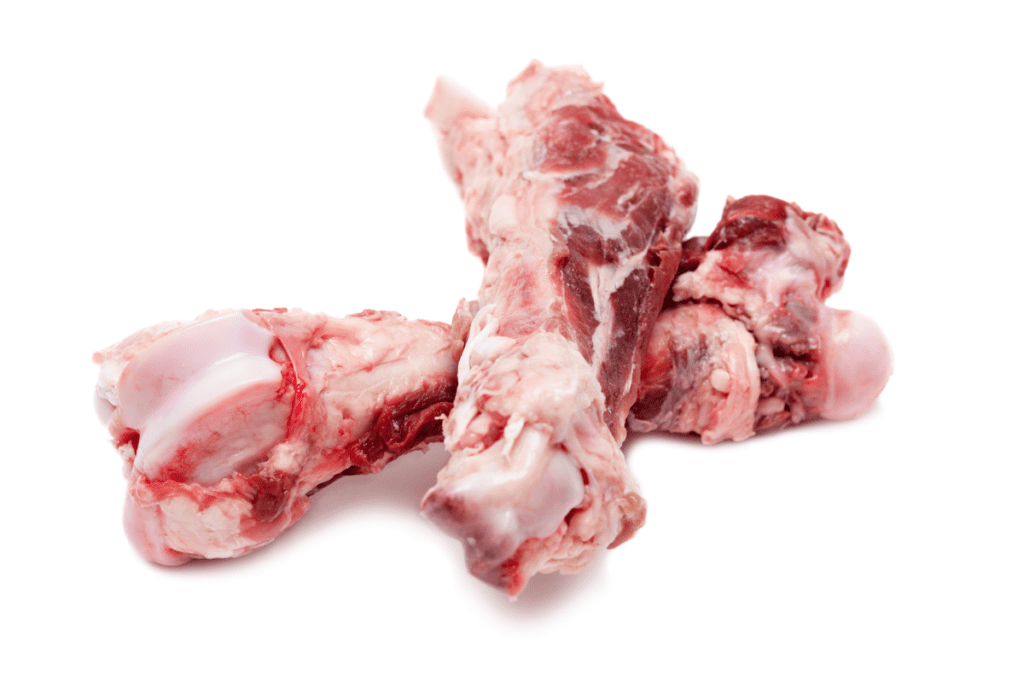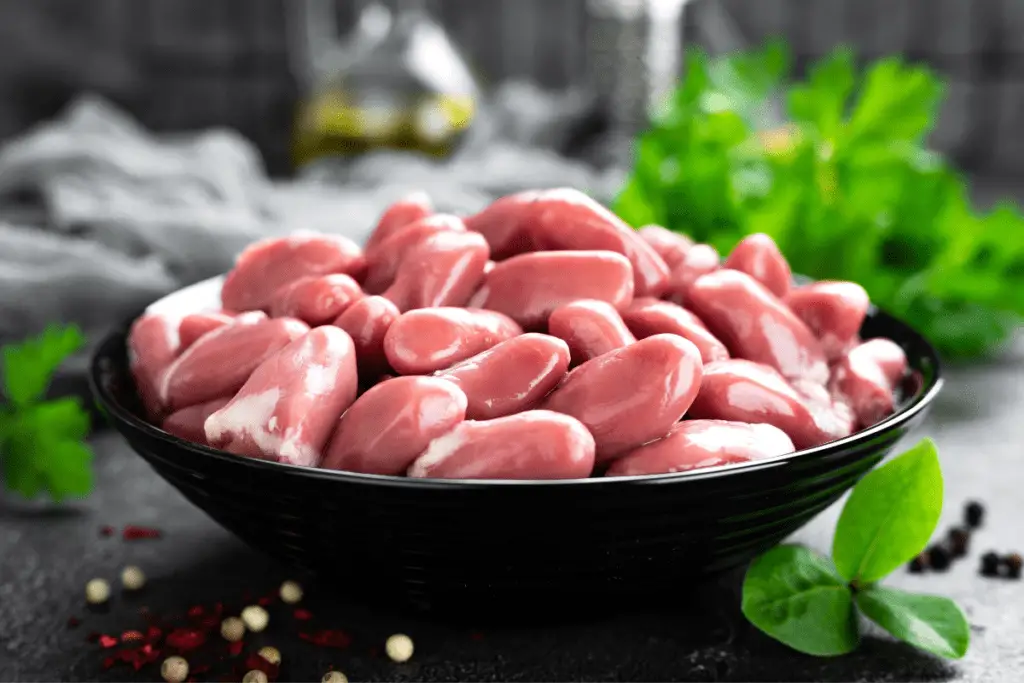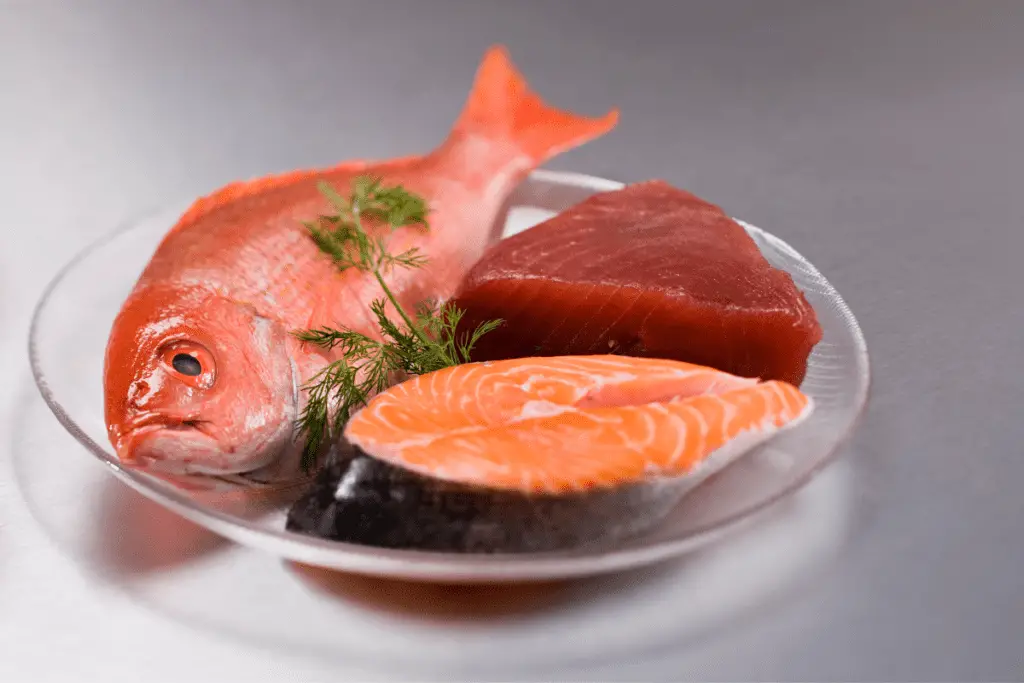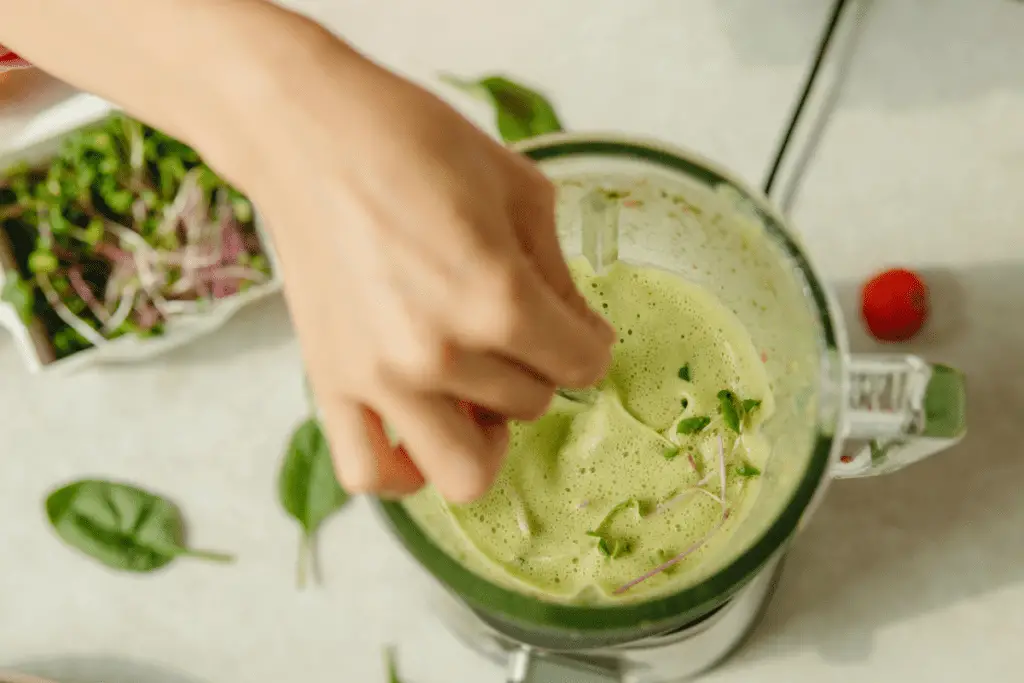Aside from the conventional dog food, pet owners are now exploring other options when it comes to the nutrition of their canines. One of which is the popular raw diet for dogs. As it’s called, this type of diet involves food items that aren’t heated or cooked.
The main goal of the raw diet is to bring back the natural diet of dogs in the wild. True enough, wild dogs eat raw meat, vegetables, and fruits. It’s believed that this is way better than the highly processed and seasoned dog food you can purchase in pet stores.
But is this suitable for your Pitbulls? What are the raw dog food pros and cons? Below, we discuss these in detail.
What To Feed Pit Bulls In A Raw Diet
As mentioned in the previous two articles, species-appropriate pit bull nutrition consists of raw meats and bones, fish, eggs, and very small amounts of greens, herbs, veggies, and fruit. But what exactly should you feed?

Raw meaty bones (RMBs) comprise the main part of the diet. Why is it so important that you feed bones and not just meat? In a word, calcium. Dogs not only have specific calcium requirements (too much and too little can both cause problems), but they also require calcium and phosphorous in a ratio between 1:1 to 2:1.
Meat contains tiny amounts of calcium, but lots of phosphorus, while bones are high in calcium and contain a moderate amount of phosphorus.
RMBs with the highest bone to meat levels (e.g., poultry wings, backs, and necks) deliver calcium and phosphorus in a ratio of roughly 1:1. If you feed a lot of bones that are “meatier” (e.g., chicken leg quarters or breasts), you’ll need to add another calcium source to the diet. But don’t worry, by giving eggs with the shells, you can feed even the meatiest bones without risk of unbalancing the diet.
Some dogs also do fine with beef ribs and necks, but these bones are quite a bit harder. They’re not a good idea for dogs new to the species-appropriate diet.
Due primarily to cost, chicken and turkey RMBs will probably be the main component of your pit bull’s diet, but don’t feed only poultry. Pure poultry diets can be too low in zinc, so feed red meat at least twice a week. Remember, variety is important.
The risk of trichinosis is very slight when feeding USDA inspected pork intended for human consumption, but if you’re concerned, freezing the meat for 3 weeks at 5 degrees Fahrenheit or for 3 days at -4 degrees Fahrenheit will kill the worms.
Unfortunately the species of Trichinella found in wild game meats such as venison, elk, and bear is more resistant to freezing.
If you have access to such game meats, inspect them carefully for the presence of parasites before feeding them to your dog. If you’re not sure what to look for, have the meat inspected by someone who does.

About 10% of your pit bull’s diet should consist of raw organ meats. You can feed any inspected organ meat, but livers, kidneys, and hearts from chicken, turkey, lamb, and beef are usually the easiest to find.
Chicken and turkey gizzards are also an option. Another great choice–if you can find it–is green tripe (not the bleached tripe available in supermarkets). Kidneys and especially livers are very rich and should not comprise more than half of your organ meat mix.
Most meat should be fed on the bone, but adding small amounts (16-20 oz a week) of boneless muscle meat to the diet–either ground or in chunks–is fine as long as you remember to feed the eggs with their shells.
The main reason you may want to feed boneless muscle meat on occasion is that your pit bull needs some red meat in her diet, and if you can’t find lamb RMBs or oxtails at an affordable price, ground beef may be your best bet for inexpensive red meat.

Wild fish frequently contains parasites, so stick to farmed fish or wild fish species such as tuna and snapper that have a very low risk of parasites. When in doubt, look for raw fish that’s recommended for sushi.
Never feed raw salmon due to the risk of salmon poisoning disease, which is potentially fatal. Carp, catfish, and smelt can be fed on occasion but not at every fish meal because these species contain an enzyme that binds thiamin (vitamin B1). Fish that weigh less than half a pound can be fed whole–heads, guts, and all.
If you can’t find affordable raw fish, it’s okay to substitute canned mackerel, sardines, or tuna packed in spring water. Just make sure there aren’t any unwanted additives. It’s best to drain the fish before feeding to get rid off some of the salt.
Feed your pit bull a large raw egg with the shell 3-4 times a week. The egg’s shell is about 95% calcium, which is needed to balance the excess phosphorus contained in the organ meats, boneless muscle meats, meatier RMBs, and the eggs themselves.
How do you feed the shells? Wash them and leave them to dry for at least a day. Then grind them into a fine powder using one of those little electric coffee/spice grinders or a mortar and pestle. Mix the egg shell powder with raw egg, ground meat, or pureed veggies.

As mentioned in the first part of this series, dogs have no nutritional requirement for carbohydrates. Consequently feeding veggies and fruit is optional. It’s also a lot of work. Raw veggies and fruits need to be completely crushed in a food processor or juicer in order for your dog to be able to access their nutrients.
If you want to feed veggies, make enough for several weeks and freeze in serving-sized containers. Then thaw as needed.
So why would anyone go to the trouble of preparing a fruit and veggie meal if dogs have no need for it? These plant foods are very high in vitamins and minerals, and those are certainly beneficial.
If you want to make a veggie mix for your pit bull, endive and romaine lettuce, parsley, bok choy, dandelion and mustard greens, wheat grass and other grasses, broccoli, squash, zucchini, carrots, celery, pears and apples (without the core) are all good choices. Feed about 1/4 cup three times a week.
Supplements are also entirely optional, but you may want to add some fish body oil (not liver oil) and vitamin E to your pit bull’s diet.
Many dogs enjoy omega-3 fish oil capsules so much that you can give them as a healthy treat between meals. If you’re not feeding veggies, you might want to give a teaspoon of powdered greens or algae on occasion, but it’s not essential.
Common Health Problems In Pitbulls
Possible harm of raw dog food
To be fair, we also discuss the possible harm that a raw diet may bring along the way. First, there’s a high risk of contamination. If you don’t prepare and store the meat items properly, it’s easy to succumb to bacterial contamination that will cause digestive problems to your dog.
Here are some of the potential risks of raw diet:
Choking. The bones can choke a Pitbull or break their teeth. In some cases, a bone splinter can also puncture the esophagus or intestines of the doggo. This can be fixed easily by grinding the bone, though.
Bacterial contamination. Those who are against the raw diet argue that the main problem is the possible threat of bacteria not just to dogs but also to humans. This concern has basis since some pet owners tend to over-store large amounts of raw food.
If not frozen properly, it can easily spoil and harbor unimaginable amounts of bacteria. Some of the common bacteria in contaminated meat include Salmonella, Listeria, and E. coli.
Unbalanced diet. Here’s one common risk that newbie pet owners face. Those who have bare knowledge of nutrition are likely to compromise the balance of their pet’s diet. Commercial food products are formulated by experts. Unless you’re confident about your measuring and preparation skills, it’s best to stick to commercial dog food.
Re-serving leftovers. Some pet owners who want to save money tend to re-serve leftovers to their dogs. Remember, the moment the food is exposed to your dog’s saliva and other external elements, it becomes automatically exposed at high risk of spoiling.
FAQ
Can I feed my pitbull puppy raw food?
Can pitbull puppies eat raw meat?
What raw food should I feed my pitbull?
- Muscle meat, often still on the bone.
- Bones, either whole or ground.
- Organ meats such as livers and kidneys.
- Raw eggs.
- Vegetables like broccoli, spinach, and celery.
- Apples or other fruit.
- Some dairy, such as yogurt.
How do you start a pitbull raw diet?